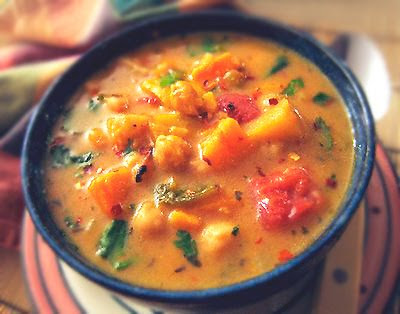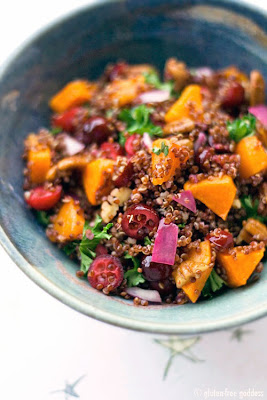 |
| View toward Abiquiu, New Mexico. |
Roasted Corn Chowder with Lime
A young rattlesnake curled on a flat warm stone by the laundry room door yesterday. So easy to miss, I almost walked right by him as I carried a basket of rolled clean socks and sleeve-tucked tee shirts. He was next to invisible, pristine and silent, his distinctive pattern dovetailed into pinon-filtered sunlight.
It was pure animal instinct to turn my gaze left and spot him. One sharpened second out of my usual preoccupied saunter. I backed away and sprinted (with a moment of rare agility) into the casita to fetch Steve.
I think you should see this! I blurted, interrupting his work at the laptop. My husband didn't hesitate. He's found the Save key before I can deposit my dryer warmed cargo on the bed. He knows the desert gives up unexpected gifts. He doesn't want to miss a trick.
We stared in tandem at the tiny threat for three minutes until the youngster uncurled and nosed himself back into the rock embankment.
After all the excitement, I settled in with a mug of tea and searched through blogs, looking for some indefinable solace or connection. One moment of relief from my isolation. Looking for others navigating the serpentine process named the incomprehensible name of peri-menopause.
What I found instead was one veiled advertisement after another. Chatter about soy and phyto-estrogen creams. Herbal remedies promising relief. A litany of symptoms and wallet emptying cures.
But no wild wisdom.
The perky
Remember, it’s natural! doesn’t help me much through this intricate, sweaty mess, Darling. It does nothing to quell my dizzying, racing heart. We seem a generation without much guidance in these feminine arts beyond denial. We really have no ample bosomed baudy comfort. No grinning painted shaman. At least I don't. Every woman before me in my extended family had hysterectomies. Cutting out the sickened uterus. Circumventing hysteria (the root word and meta implication after all). Then came the HRT they swallowed with promises of eternal youth conquering the cruelty of Nature via horse urine.
When I was new in this process, oh yeah. I tried the yam creams. The vitamin E. The herbal teas. The yoga poses. After awhile you begin to weigh the cost and benefit of all this focused energy. You get tired of fighting. Fighting It. Cajoling It. It's exhausting, and I exhausted and bored myself with all the research and reading. What I spent on menopause books and yam cream could have bought several cases of organic dark chocolate.
Twelve years into it now, I just feel ridiculous.
How many hot flashes does it take? How many sweaty necks and palms and damp upper lips- as you stand in the bank lobby listening to a mortgage broker discuss the local art scene (and it is all you can do not to claw your way to the door)? How many sleepless two A.M.'s, lying in the dark listening to your husband's even breathing? How many bumps of acne, and broom hair that pulls out in fragile nests when you brush it, standing in front of the mirror noticing, with a startle, there is a stranger looking back?
A creature other than yourself. Some tired woman with an eggshell smile. Longing to feel engaged. Ravished.
Visible.
Read more + get the recipe >>
















.png)
.png)
.png)

















